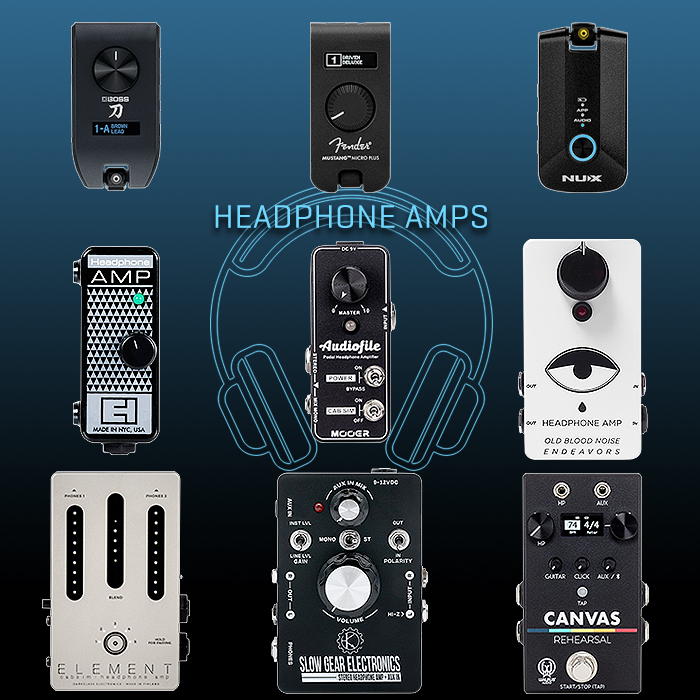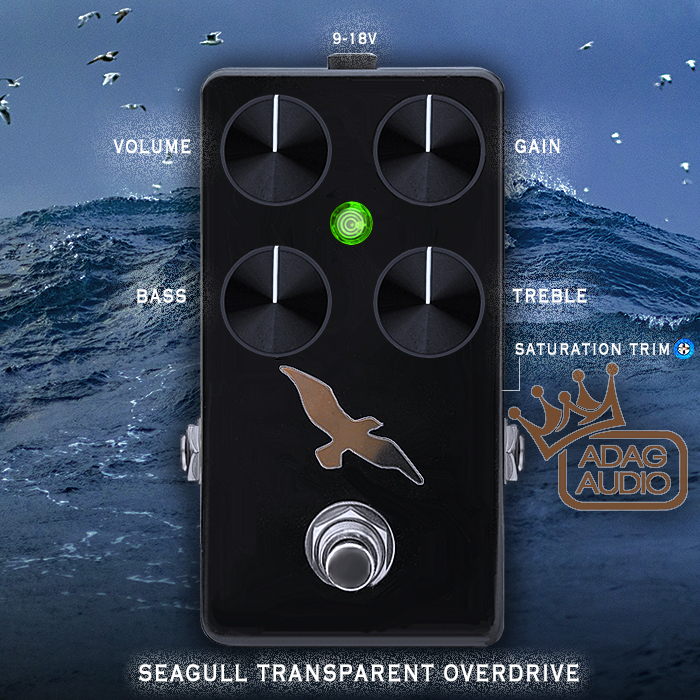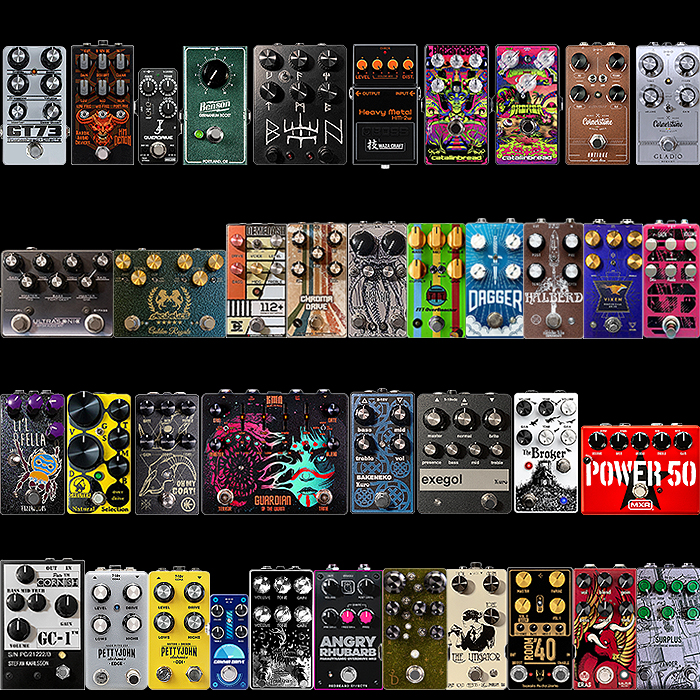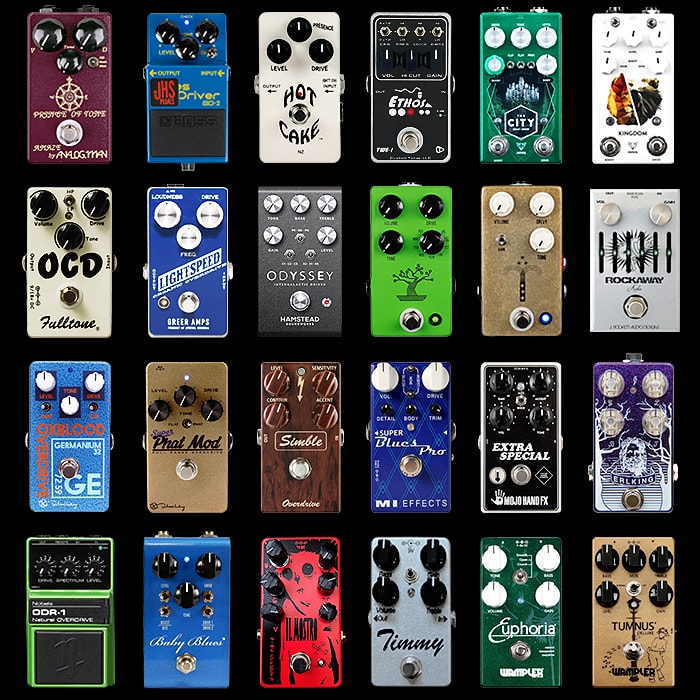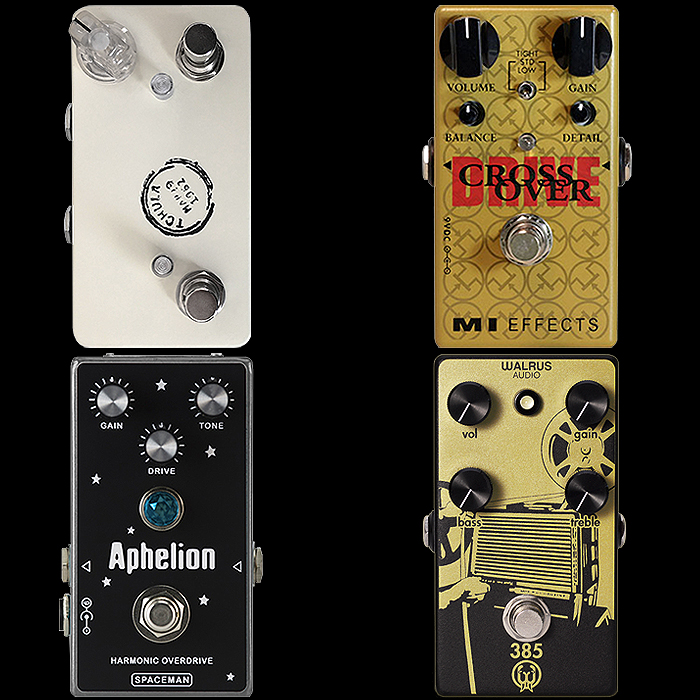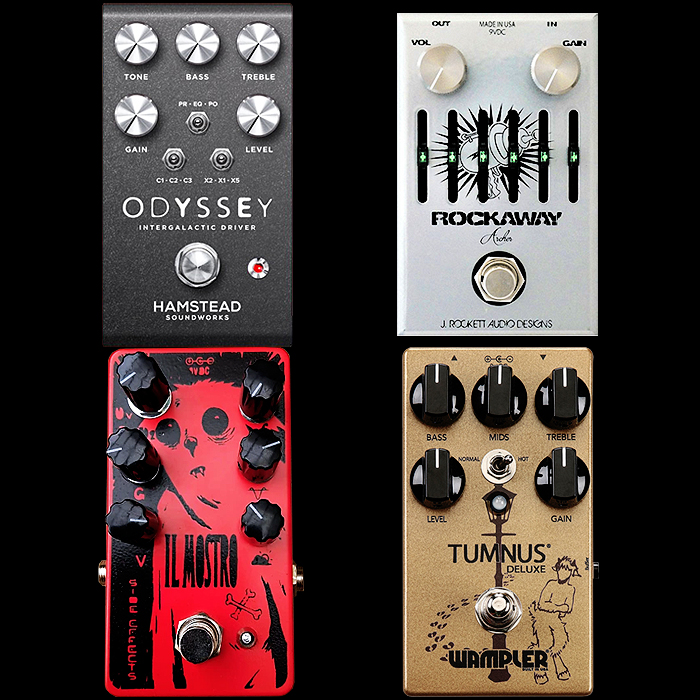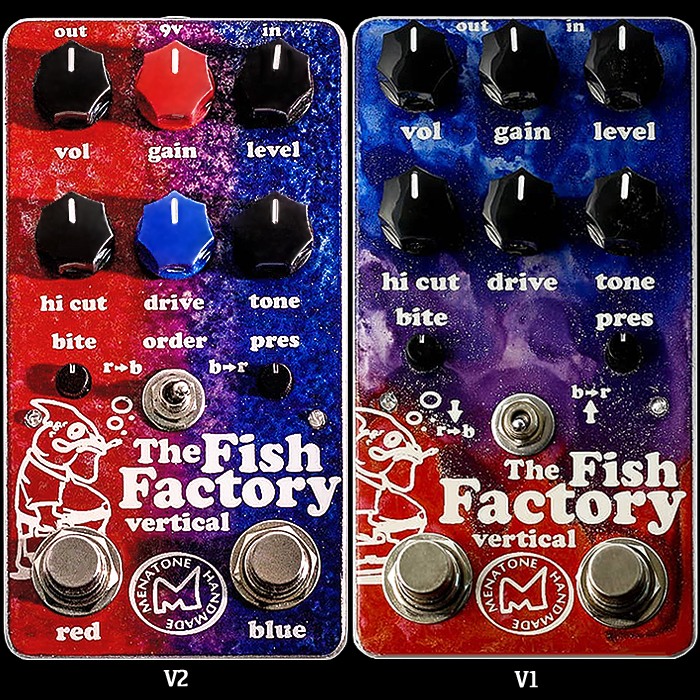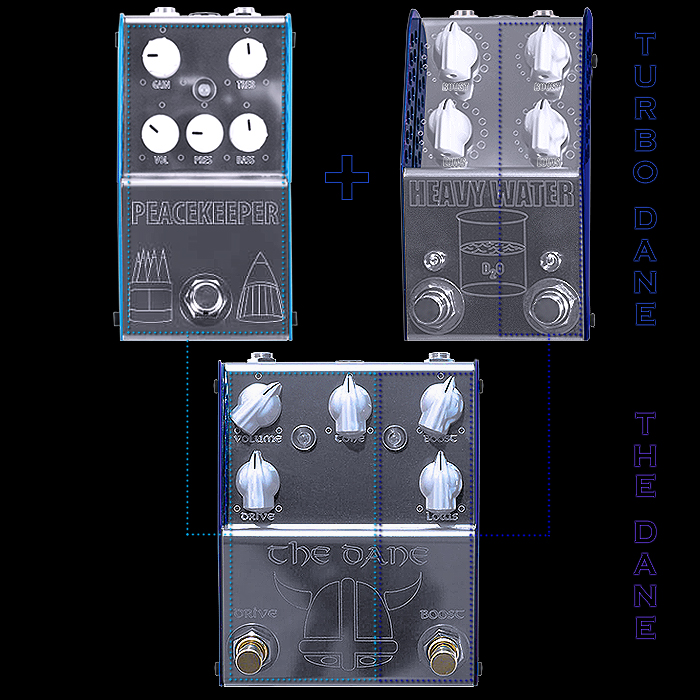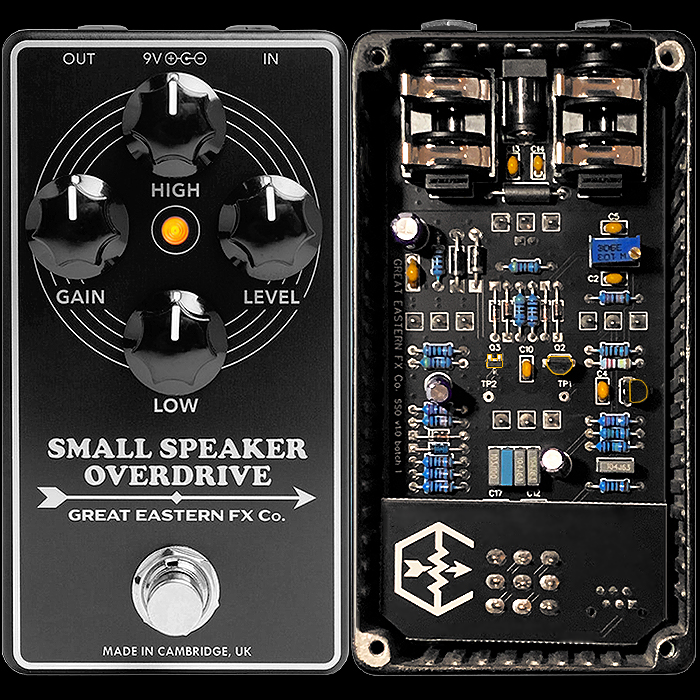Pettyjohn Electronics Delivers Extraordinary Vintage Textures with its ODI Overdrive - in Classic Mods and NOS Diodes Edition

Before I get into the meat of the review, I thought it best to put everyone fully in the picture as regards my evolving appreciation for Pettyjohn Electronics. I freely admit I am largely somewhat late to the party as such, in part due to my earlier confusion about parts of the brand’s modus operandi. While I have now of course acquired each of the brand’s most recent ’Core’ series - RAIL Fuzz, ROUS Distortion and ODI Overdrive.
I’ve been aware of the excellent looking and sounding Pettyjohn Foundry series for a number of years - but was always a little bit conflicted by how those pedals were being sold. Meaning that every pedal came with a number of different configuration options - which were originally / used to be sold under the designation of ’Upgrades’. To my way of thinking this somewhat negatively impacted the ’Standard’ editions and made those sound slightly under-par - whereas latterly these are more accurately referred to as ’Mods’ and ’Options’ nowadays. In fact you can really treat these as just slightly different voicings of those circuits - where you typically get component options which render more clarity and higher headroom at one end of the scale, while at the opposite end of the spectrum you have rather a more textured take - which actually means that the ’Standard’ edition is typically the mid-way position between those two extremes. Some players really like that extra headroom and dynamics, while many others prefer more harmonics and texture - or just some of each in moderation = Standard.
This is pretty much exactly the case for the ODI - where in my version - which is the Classic Opamp Mod, plus Vintage NOS Clipping Diodes Mod - we get slightly improved specs on the original Boss OD-1 Circuit. Where Classic Mod gives you 2 x JRC4558 Opamps, and NOS Clipping Mod gives you 2 x Vintage NOS 1S1588 Silicon Clipping Diodes. At the other extreme you have the Transparent Mod - which utilises a variety of Auric Capacitors and deploys 2 x OPA Headroom-extending Opamps for ultimate clarity. The Standard edition being the mid-way point contains one JRC4588 Opamp, and one OPA Opamp - where the 3 diodes are all 1N4148 - compared to the NOS Clipping Mod which utilises 2 rare 1S1588 Diodes plus either a 1N4148 or BA-282 on the third slot - depending on the preferences of each build engineer.
I have in the past criticised builders for not always naming their key constituent tone-generating parts - particularly when they are billed as higher-cost NOS parts. While I understand builders need some degree of flexibility in their component sourcing and deployment. Each of these pedals is built by hand and individually tested against a reference example - where the individual build engineer has some flexibility in the selection of some parts in order to achieve perfect / optimal results. So where parts are specifically named - you will get exactly those parts, while where not definitively referenced by exact designation - there will typically be options for the builder to individually select what they believe will render the best results. It’s important to note that for some of those vintage parts the tolerances can be as much as 30% - such that even two pedals with exactly the same components can sound somewhat distinct. In short each pedal is pretty unique.
Mine sounds absolutely magnificent - particularly with the Level somewhat cranked - you get that lovely textured and harmonic breakup with that wonderful warm vintage timbre. Stephen Pettyjohn has really worked some magic on enhancing this circuit to deliver more texture at either end of the scale - with significant enhancements in particular to the lower range of gain.
Truth is I have long wanted an original specs OD-1 and was quite unprepared to pay circa £500 equivalent for an original OD-1 in not particularly pristine condition. People had the opportunity in 2017 to get an official Boss Compacts 40th Anniversary box set of an official OD-1 reproduction - alongside a PH-1 and SP-1 - all for the princely sum of £759. As more of the practical type - and not really with space to accommodate additional shelf-ware, I really did not need and SP-1, and if fact prefer the PH-1R as my Boss Phaser of choice - so essentially paying £759 to get an OD-1 was a little bit of a tall order for me.
In fact I see the Pettyjohn ODI as very much the Boss OD-1 Waza Craft that never was. Boss had some 35 years since the discontinuation of the OD-1 in 1985 to introduce a Waza Craft version of the same - but that has never materialised. While Pettyjohn have taken on the task of Waza-fying the OD-1 courtesy of their refined ODI - with additional 2-Band EQ, where the original had none.
The Lows pre-gain control sweeps a rather extended frequency range from circa 30Hz to beyond 1kHz - this really beefs up the richness of the vintage texture delivery. At the other end you have a post-gain 1kHz > 22kHz Highs control - which can either soften and warm up the high harmonics or else deliver enhanced chime. Both those controls are superbly calibrated for maximum impact and range - and each significantly shapes the tonality, timbre and texture of the pedal’s output - there are so many sweet-spots up and down the curve of the taper of those knobs that it’s really a clean sweep of appealing tones.
The taper on the tone controls is pretty even, with a not altogether dissimilar action on the Drive dial, while the Level knob has a couple of jump points in the higher register. I find I’m getting the very best tones with the volume nearly fully cranked - in fact I typically start by cranking the Level - and then bringing it down a little just to ameliorate it a touch - you need some quite fine-tuning at that top-end as there are a few points on the higher taper where the output jumps slightly versus a totally smooth taper.
All in all I could not be more satisfied with this pedal - it really has lived up to every expectation, and I will be deploying it alongside it’s soul-brother - my other favourite Boss - the Keeley Freak Fuzz Modded BD-2 Blues Driver.
This ODI pedal really is a godsend for us OD-1 fans - and this gives you a neat way to own in fact a significantly better version of that original Classic Boss Compact pedal - all the way from 1977! I can’t see how anyone could not be as impressed as me - in how this pedal has worked out. Stephen Pettyjohn has made some really neat tweaks to the core circuit to make it an even better proposition - this is definitely THE version to own!
With the ODI I determined I definitely wanted the Mods in order to get as close as possible to the original’s prowess. While for my RAIL Fuzz and ROUS Distortion - I felt the standard editions already sounded amazing - and they are indeed two of my favourite varieties in their respective genres.
I’ve long wanted a Pettyjohn Fuze Fuzzstortion - which is alas now discontinued - I’ve been asking Stephen and his crew, including my original contact Nate, if there isn’t at least one forgotten edition of that lying around in some overlooked cubby-hole. And now that I’ve gained a much fuller understanding and appreciation for how Pettyjohn operates I will no doubt be adding a few more of their classics to my reference collection. There are a few there that I have my eyes on - which I will cover off in more detail in my forthcoming ’10 of the Best Pettyjohn Electronics Pedals’ feature. Congrats to the gang on a mission well-accomplished for the ODI - everyone should have one - in the same specs as mine!
The Modded editions can only be acquired direct from the Pettyjohn Webstore - where the Standard version retails for $199, the Classic Opamp Mod is another $49, as is the Transparent Mod, and the NOS Clipping Diodes Mod is a further $29 - so all in a very fitting and symbolic $277 - of course indicating the 2nd proper iteration of the ’77 original!!!
Demos and Sound Samples
There aren't many demos out for this pedal yet, and however decent the two ones I found are - they don't quite seem to capture the magic of my own edition - which renders slightly warmer and sort of creamier to a degree than either of those - I assume they are the standard editions.
I will endeavour to post more as they materialise :










